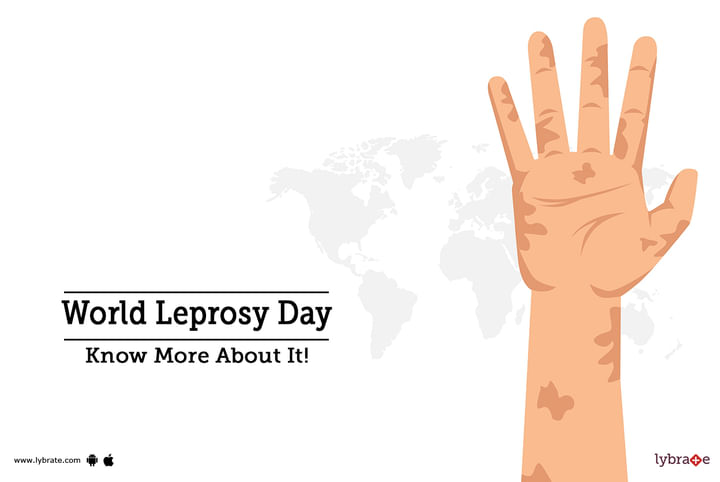World Leprosy Day - Know More About It!
What is Leprosy?
Leprosy is also known as Hansen’s disease. It is a chronic dermatological disorder caused by the bacteria Mycobacterium Leprae. The peripheral nerves and mucosa of the upper respiratory tract are affected by the bacteria. Leprosy starts with the appearance of scaly skin lesions. If not treated in the primary stage, it can progress rapidly and cause permanent damage to the skin. It can damage the eyes, nerves and limbs. Leprosy can be moderately contagious, therefore it is necessary for the patient to be quarantined during the course of the treatment to prevent the spread of disease among other family members.
World Leprosy Day raises awareness of a disease that many people believe to be extinct. Today it is not just the disease that is forgotten, but the people too.
Etiology Agent -
Mycobacterium Leprae is an acid-fast bacilli that attach cutaneous tissues and peripheral nerves, producing skin lesions, anaesthesia, infection, and deformities. The contrary of popular believes leprosy is not highly contagious but actually has low infectivity.
What is the Incubation period?
It ranges from five and a half months to eight years.
What is the Mode of Transmission?
It transmits through the respiratory droplet. Another mode of transmission is inoculation through the skin break and mucous membrane.
What is the Pathology of Leprosy?
M. leprae attacks the peripheral nerves, especially the ulnar, radial, posterior-popliteal, anterior-tibial, and facial nerves. When the bacilli damage the skin fine nerves, they cause anaesthesia, anhidrosis, and dryness. If they attack the large nerve trunk, motor nerve damage, weakness, and pain occur, followed by peripheral anaesthesia muscles paralysis and atrophy. Claw Hand, foot drop, and ocular manifestation, such as corneal sensitivity and ulceration, conjunctivitis, photophobia, and blindness. It can invade the tissue and organ of the body. In lepromatous diseases, early lesions are multiple, symmetrical and erythematous, sometimes appearing as macules or papules or papules with smooth surfaces. Later these lesions enlarged and formed plaques on nodules on the earlobes, nose, eyebrows, and forehead, giving the patient a leonine appearance.
What are the Clinical Manifestations?
- Loss of eyebrows and eyelashes.
- It also leads to loss of function of sweat and sebaceous glands.
- Epistaxis, ulceration of the uvula and tonsil, septal perforation and nasal collapse.
- Raised, large erythematous plaques appear on the skin with clearly defined borders. As they grow, they become rough, hairless and hypopigmented and leaves an anaesthetic scar.
Diagnostic Procedures to be followed -
- Identification of the signs and symptoms
- Tissue Biopsy
- Tissue smear
- Blood tests show increased RBC, ESR, decrease Ca, albumin and cholesterol level.
Modalities of Treatment -
- Sulfone therapy
- Multiple Drug therapy
- Rehabilitation, recreational and occupational therapy.
Nursing Management -
If the patient is admitted to the hospital, isolation and medical asepsis should be carried out. Also, give moral support and encouragement.
Prevention to be taken -
- Report all cases and suspected of leprosy
- Newborn infants should be separated from leprous mother
- BCG vaccine may be protective if given during the first 6 months of life
- Health education as to the mode of transmission.



+1.svg)
